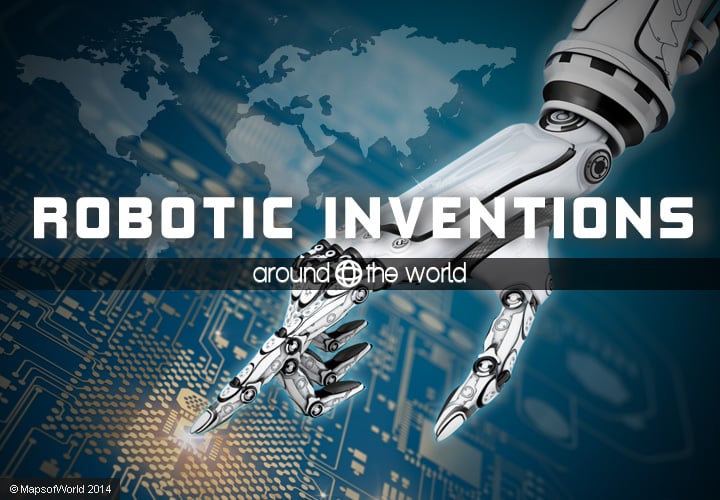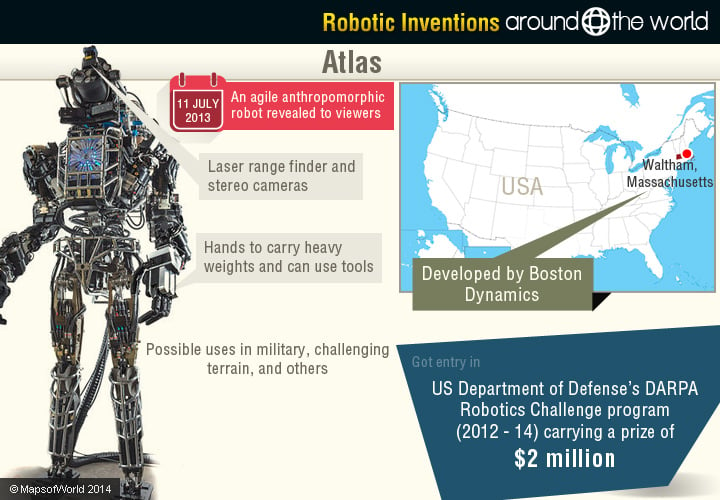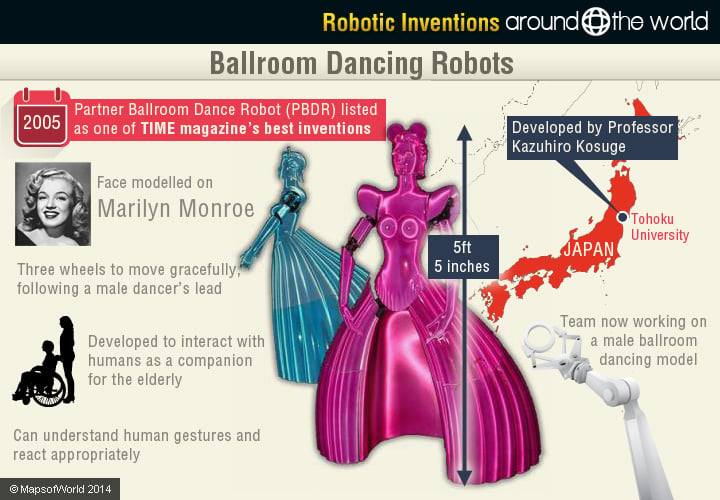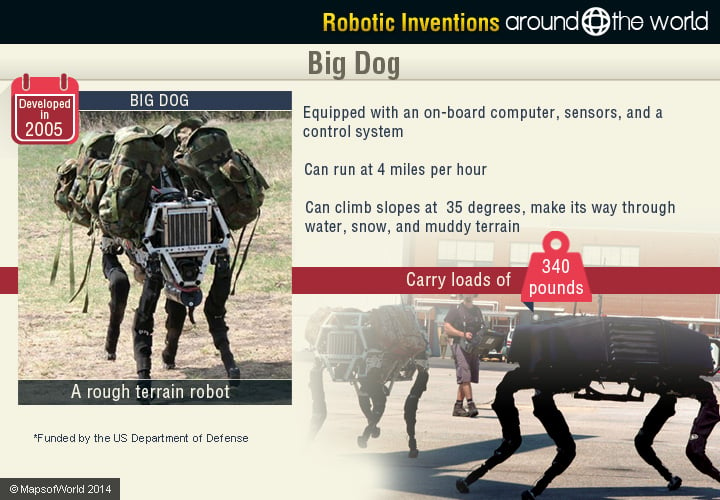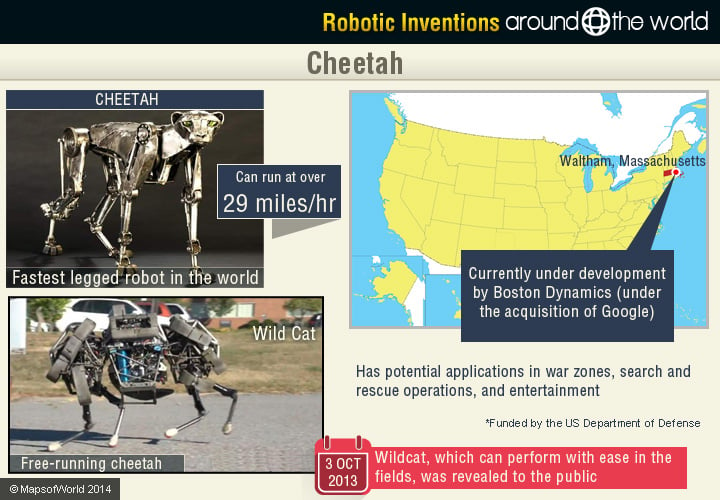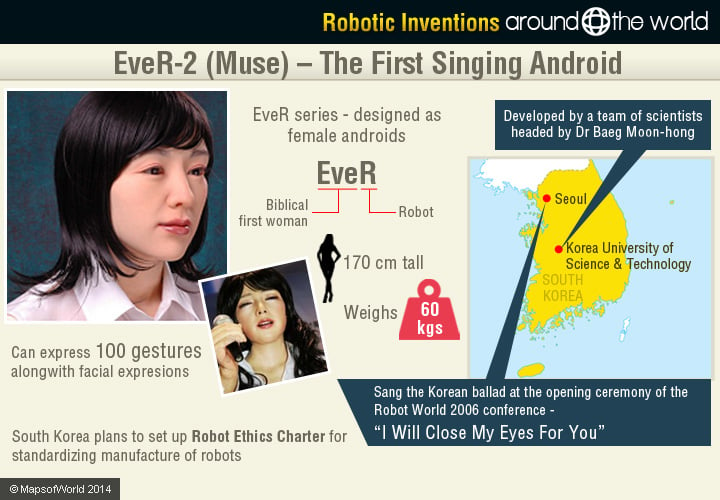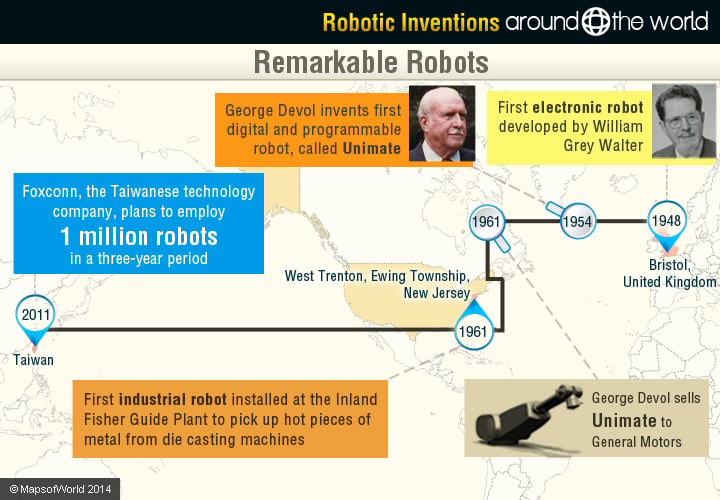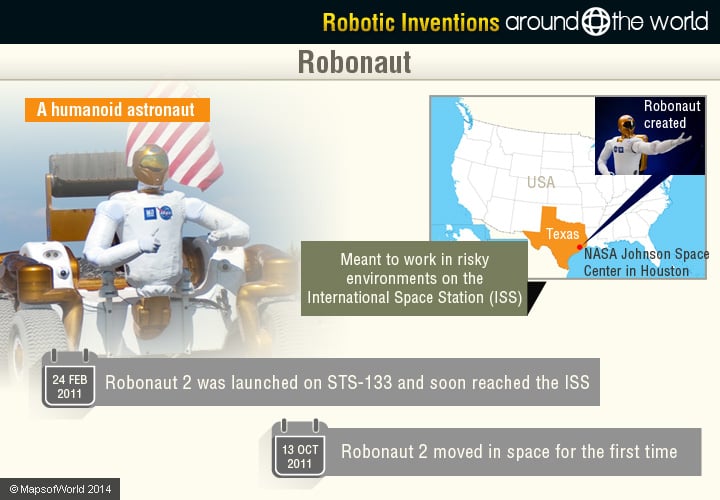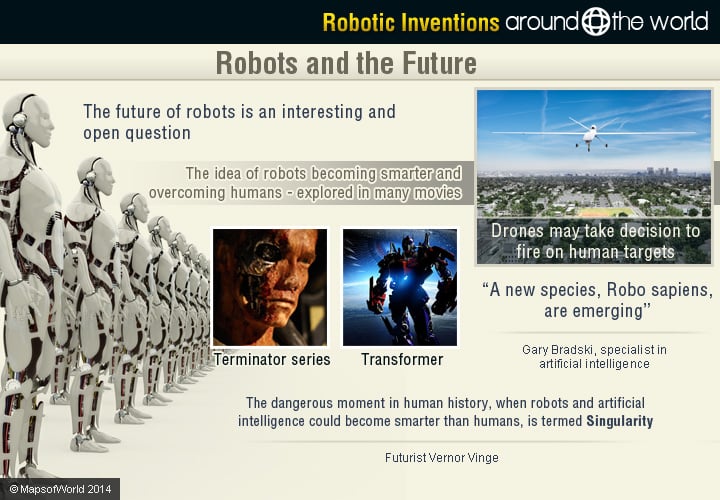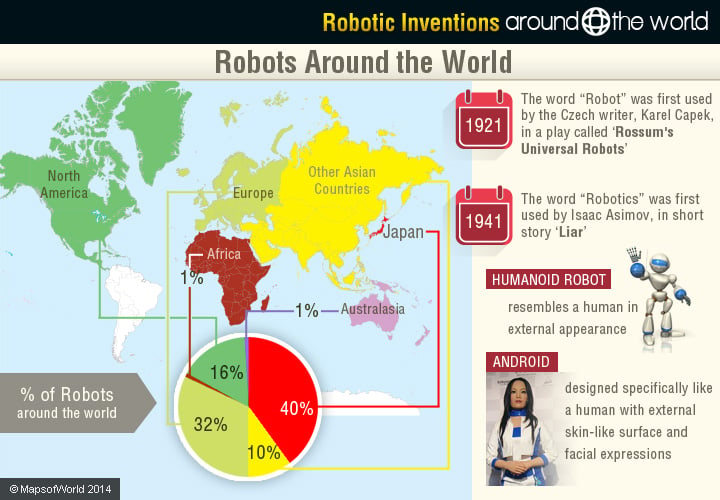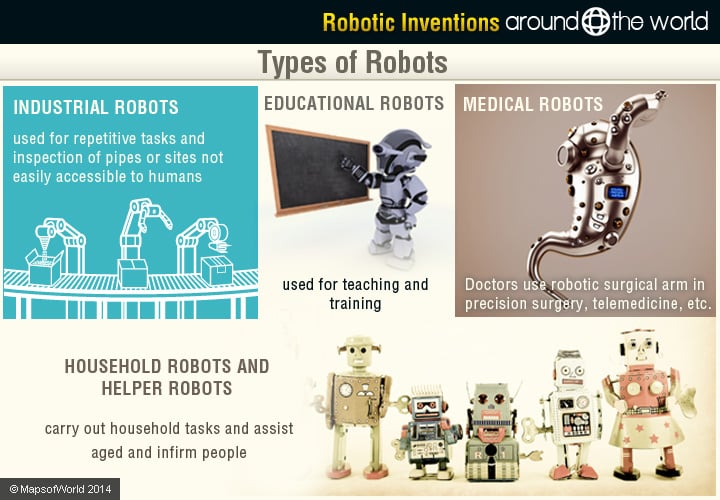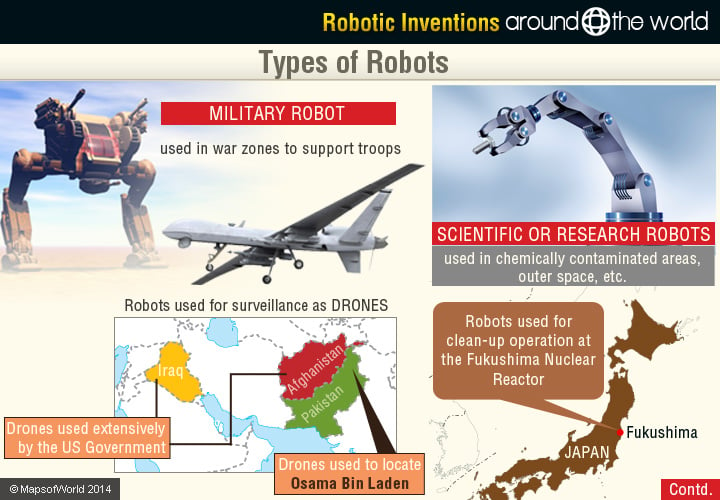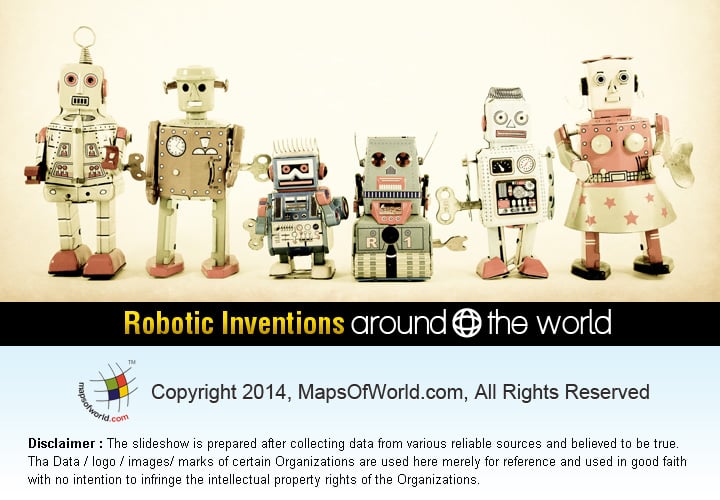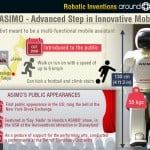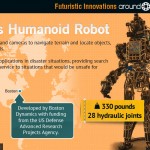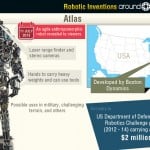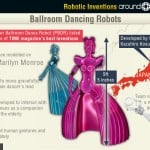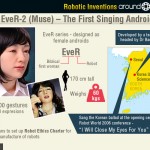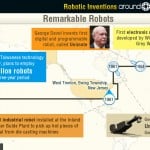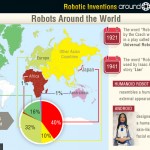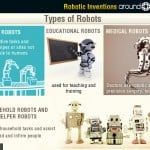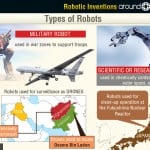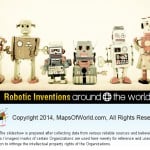Robotic Inventions Around the World
Both robotics and football fans around the world were thrilled to see a special moment at the inauguration of the Football World Cup on 12 June 2014, at the Corinthians Arena in Sao Paulo, Brazil. As part of the opening ceremony Juliano Pinto, a 29-year-old male paraplegic kicked the inaugural soccer ball wearing a robotic exoskeleton that enabled him to regain his ability to walk.
The robotic exoskeleton is controlled by the wearer’s mind. A cap on Juliano Pinto’s head picked up signals from his brain as he mentally visualized kicking the ball. These signals were sent to a backpack connected to the exoskeleton. The signals are transmitted to the exoskeleton’s legs which are moved by hydraulic forces.
The robotic exoskeleton was developed by the Walk Again Project, headed by neuroscientist Dr. Miguel Nicolelis of Duke University and a team of over 150 researchers. Some of these scientists were present to see this proud step forward in robotic invention. Read on to find out more about Robots and Robotic inventions around the world.
Robots Around the World
Many industrially advanced countries in the world have significant numbers of robots. 40% of the world’s robots are in Japan (the country with the highest number of robots), 32% in Europe, 16% in North America, 10% in other Asian countries, 1% in Australasia, and 1% in Africa. The word “Robot” was first used by the Czech writer, Karel Capek, in a play called R.U.R. (Rossum’s Universal Robots) in 1921. The word was used to describe automata, who carried out menial jobs for their human masters.
The word “Robotics” that describes the study of robots, was first used by Isaac Asimov, an acclaimed science fiction writer, in his short story “Liar” (1941). Asimov also devised the “Three Laws of Robotics” that define how robots should interact with humans. The rules got introduced in his short story called “Runaround” (1942).
The Encyclopedia Britannica defines a robot as “any automatically operated machine that replaces human effort, though it may not resemble human beings in appearance or perform functions in a humanlike manner.” A robot that resembles a human in external appearance is called a humanoid robot. A robot designed specifically to look and act like a human, particularly if it has an external skin-like surface and facial expressions is called an Android.
Types of Robots
There are many different types of robots.
Military robots are used in physical environments that are dangerous for humans such as war zones to support troops and defuse bombs. Robotic exoskeletons are being developed to augment the physical capabilities of soldiers. Robots also play a key role in surveillance in the form of drones. They have been extensively used by the US government in Iraq and Afghanistan. Drones were also used for the surveillance to detect the location of Osama bin Laden in Pakistan.
Scientific or Research Robots are used in nuclear plants, chemically contaminated areas, outer space, deep sea exploration, and volcano exploration. Robots were used as part of the clean-up operation at the Fukushima Nuclear Reactor in Japan, after the reactor was damaged by a tsunami in March 2011. Industrial robots are used to carry out repetitive tasks such as car assembly and manufacturing and packing, as well as inspection of pipes or sites that are not easily accessible to humans.
Medical robots are used in precision surgery and telemedicine, where a human doctor in one location can guide a robotic surgical arm in another.
Educational robots are used for teaching and training in place of human teachers. Household robots and helper robots carry out tasks like cleaning a house or car, mowing the lawn, and assisting aged and infirm people manage their daily lives.
Remarkable Robots
1948 – The first autonomous electronic robot was developed by William Grey Walter in Bristol, UK.
1954 – George Devol invents the first digital and programmable robot, called Unimate
1961 – George Devol sells Unimate to General Motors
1961 – Unimate becomes the first industrial robot when it is installed at the Inland Fisher Guide Plant in West Trenton, Ewing Township, New Jersey. Unimate’s job is to pick up hot pieces of metal from die casting machines.
2011 – Foxconn, the Taiwanese technology company, which has 10,000 robots in its factories, announces a plan to employ one million robots in a three-year period.
As scientific research progresses, robots are likely to occupy a larger place in our lives. By taking on hazardous and monotonous tasks, they can free humans to further explore the frontiers of their creativity. Some interesting robotic inventions around the world that could influence our lives in the days ahead are:
1. Robonaut
Many of the early space probes launched to explore our solar system were robots which had some ability to fly and land on the moon or another planet. The Voyager and Galileo space probes are examples of this, but now NASA is exploring the possibility of humanoid robots and one of them is already in space. Robonaut is a humanoid astronaut created at the NASA Johnson Space Center in Houston, Texas. Robonaut is meant to work alongside human astronauts and extend their capabilities by going into environments, where the risk is too great for humans or to carry out repetitive tasks on the International Space Station (ISS). Robonaut is characterized by dextrous manipulation, which means it can carry out tasks with its hands almost as precisely as a human being.
On 24 February 2011, the version Robonaut 2 was launched on STS-133 and reached the International Space Station soon after. After a period of testing, R2 moved in space for the first time on 13 October 2011. NASA plans to upgrade R2 so that it can carry out maintenance tasks such as cleaning filters. In future, it may be equipped with legs and a backpack that could let it operate in the vacuum of space.
2. Atlas
On 11 July 2013, Atlas an agile anthropomorphic robot was revealed to curious viewers. Developed by Boston Dynamics, headquartered in Waltham, Massachusetts, USA, Atlas has possible uses in military, search and rescue, and environmental research in challenging terrain.
Designed to negotiate variable outdoor terrain, Atlas can walk like a human and can use its hands to carry heavy weights and lift essential equipment, as well as use tools. Atlas has a laser range finder and stereo cameras placed on its head. Powered by an offboard, electric power source through a tether, Atlas can also climb structures using both its arms and legs.
With the ability to balance on one leg and the capacity to withstand being hit by projectiles, Atlas’s versatility has led to its being entered in the US Department of Defense’s DARPA Robotics Challenge program (held from 2012-2014). It is a contest in which various robots take part and which is inspired from the Fukushima Daiichi nuclear disaster in 2011. The contest carries a prize of $ 2 million.
Atlas has been described by the New York Times as “a striking example of how computers are beginning to grow legs and move around in the physical world” and as a “step toward the long-anticipated age of humanoid robots.”
3. HAL – Hybrid Assistive Limb Robot
Developed by the robotics company Cyberdyne and Tsukuba University in Japan, HAL is meant to expand and support the physical abilities of its users, mainly people who are physically challenged. HAL 5 is a full-body exoskeleton that supports the torso, arms, and legs; while HAL 3 only offers support for the legs.
HAL works on the principle of picking up the Bio-Electric Signals (BES), which are emitted when a person attempts to move their limbs. By enhancing these signals, the exoskeleton can enhance the wearer’s ability to move, life heavy objects, and make changes to their physical environment.
HAL is available for rent (only in Japan) for US$2,000 a month. In February 2013 HAL received global safety certification and in August 2013 HAL was certified for medical use in Europe as the world’s first medical treatment robot.
HAL is designed for assisting elderly or disabled people with daily tasks by extending their physical capabilities, but can also be used by workers in physically challenging jobs to augment their strength. In November 2011, HAL was used for cleaning up the Fukushima nuclear reactor site.
According to Cyberdyne, HAL leads to a fusion of man and machine and is the “world’s first cyborg-type robot.”
4. EveR Series – The First Singing Android
Developed by a team of scientists headed by Dr. Baeg Moon-hong at the Korea Institute of Industrial Technology in the Korea University of Science and Technology, South Korea, the EveR series of robots are designed as female androids. Their name EveR is derived from the biblical first woman, “Eve”, and “R” for robot.
The version, EveR-2 or EveR-2 (Muse) is 170 cm tall, weighs about 60 kgs, and can express 100 gestures along with facial expressions of sadness, happiness, anger, fear, and surprise. Her facial expressions are remarkably human-like and the computer that serves as her brain can coordinate her gestures, facial expression, and voice synthesiser. EveR-2 (Muse) performed at the opening ceremony of the Robot World 2006 conference held in Seoul. It sang the Korean ballad – “I Will Close My Eyes For You.” However, the latest versions of EveR series, i.e, EveR-3 and EveR-4 are already in place. With potential applications in the education and entertainment industries, the EveR series can also be developed as human companions for the elderly and infirm.
Meanwhile the South Korean government has announced plans to have a robot in every South Korean home by the year 2020. South Korea also plans to establish a Robot Ethics Charter that will set standards for manufacturers and users of robots, as well as frame ethical guidelines for human-robot interaction.
5. ASIMO
Designed by Honda in Japan, Advanced Step in Innovative Mobility (ASIMO) is a humanoid robot meant to be a multi-functional mobile assistant. Introduced to the public in October 2000, ASIMO has been developed further and its capabilities enhanced over the years.
ASIMO is 130 cm (4 ft 3 in) tall and weighs around 55 kg. It can walk or run on two feet with a speed of up to 6 kmph. It can also kick a football and climb stairs. ASIMO can recognize sounds and faces, and interpret human gestures and voice commands. ASIMO can answer questions by nodding or by speech in several languages and can respond to a handshake or a wave.
ASIMO has made many public appearances, primarily to promote science and learning. In 2002, ASIMO made its first public appearance in the US in dramatic fashion, when it rang the bell at the New York Stock Exchange, to open the trade sessions.
In 2008, ASIMO, as a gesture of support for the performing arts, conducted a performance at the Detroit Symphony Orchestra. In 2005, ASIMO was featured in “Say ‘Hello’ to Honda’s ASIMO” show, in the USA at the Innoventions attraction in Disneyland. It has made several appearances worldwide, which include Austria festival of Ars Electronica and Japan’s Miraikan Museum and Honda Collection Hall, etc.
6. Ballroom Dancing Robots
If one is a fan of ballroom dancing, but don’t have a lovely lady to dance with. Then, don’t worry, since one can have their own Partner Ballroom Dance Robot (PBDR).
Developed by Professor Kazuhiro Kosuge at Tohoku University, Japan, the PBDR was listed as one of TIME magazine’s best inventions in 2005.
Appearing in two models (wearing either a pink or blue gown) PBDR has three wheels that enable her to move gracefully, following a male dancer’s lead, around a ballroom dance floor. PBDR stands 5ft 5 inches tall and has a face modelled on Marilyn Monroe.
Originally developed to interact with humans as a companion for the elderly, the PBDR can understand human gestures and react appropriately. “By interpreting users’ movements to estimate what they want, care robots will be able to provide better service for the elderly who may be too sick or handicapped to give verbal orders,” says Professor Kazuhiro Kosuge.
It appears his team is now working on a male ballroom dancing model, so ladies should not worry as their perfect dancing partner may also be here soon!
7. Cheetah and Big Dog
Cheetah: The fastest robot on legs, Cheetah can run at over 29 miles per hour, setting a new record for legged robots is considered the “fastest legged robot in the world.”
Built to resemble the animal after which it is named, Cheetah has potential applications in war zones, search and rescue operations, and entertainment.
Cheetah is currently under development by Boston Dynamics (privately owned company, but now under the acquisition of Google), in Waltham, Massachusetts, USA and is funded by the US Department of Defense’s Maximum Mobility and Manipulation program. Also, a free-running Cheetah, known as the WildCat, which can perform with ease in the fields was revealed to the public on 3 October 2013.
Big Dog: Developed as a rough terrain robot in 2005, and the size of a small mule or a large dog, Big Dog can walk, run, climb, and carry heavy loads. Big Dog is equipped with an onboard computer, sensors, and a control system to help it balance, navigate its way across hostile terrain and communicate with its human handlers.
Big Dog can run at 4 miles per hour, climb up slopes at 35 degrees, make its way through water, snow, and muddy terrain as well as carry loads of 340 pounds. Developed as a replacement for dogs or mules used as a support for military and search and rescue operations, Big Dog is also funded by the US Department of Defense.
Robots and the Future
The future of robots is an interesting and open question. It is undeniable that robots make human lives easier by being put to use for hazardous, repetitive, and precision tasks where humans may be at risk. As they are endowed with more intelligence and decision-making powers (for instance drones taking a decision to fire on human targets), the question of what would happen if robots become smarter than humans, or try to overcome humans is a challenging one.
These ideas are explored in many movies, such as, I Robot, the Terminator series, the Matrix series, and the Transformers series, which have captured the popular imagination. A specialist in artificial intelligence, Gary Bradski, has said that “a new species, Robo sapiens, are emerging.”
The futurist Vernor Vinge had put forth the idea that there could come a time when robots and artificial intelligence could become smarter than humans. This moment which he calls “the Singularity” could be a defining and dangerous moment in human history. The philosophy of “Singularitarianism” explores the possibilities of what could happen thereafter. For the moment though, robots are still under human control, and offer help and assistance to humans in critical, essential, and innovative ways.
References:
Media reports
Nasa.gov
Wikipedia


